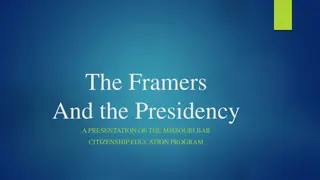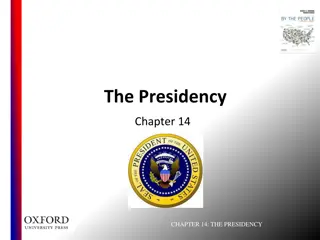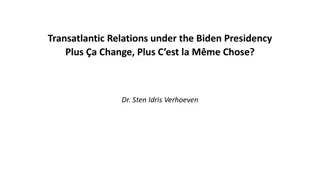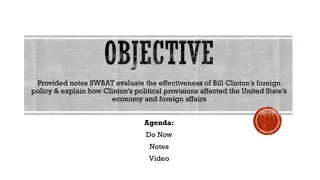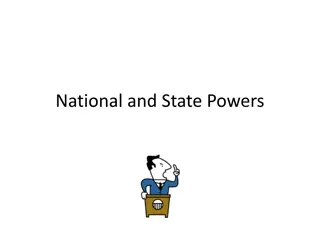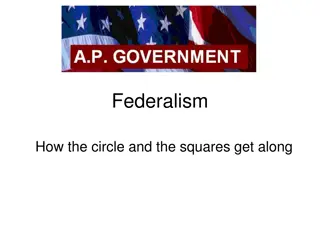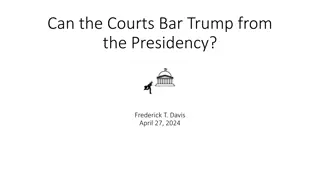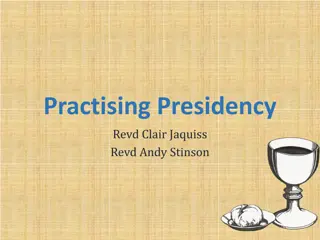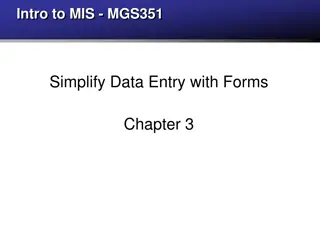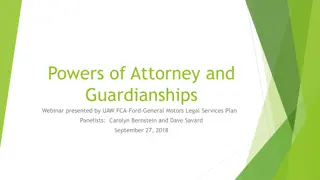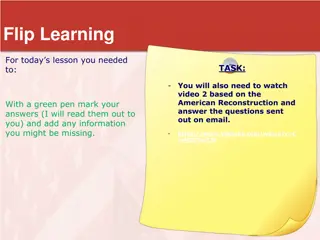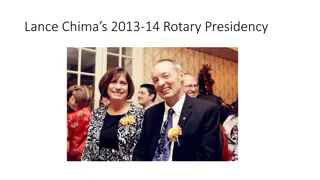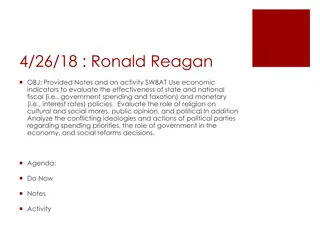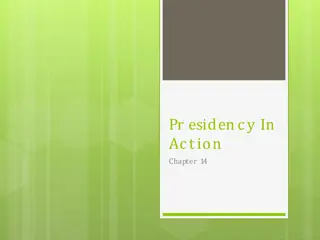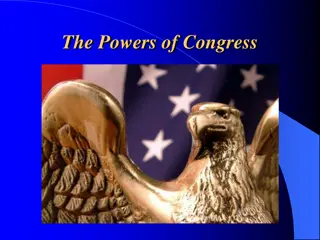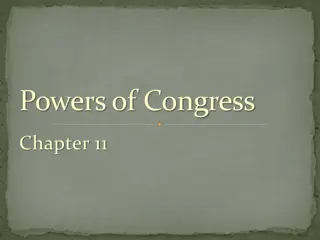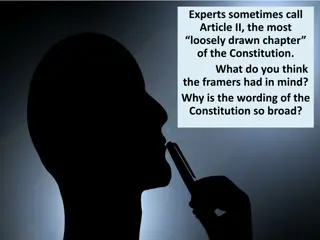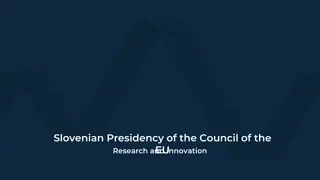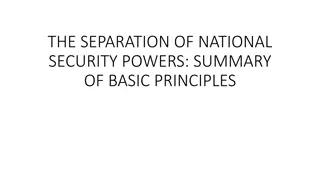Understanding the Presidency: Powers and Views
The Presidency in Action explores the enumerated executive powers and the growth of presidential power, reflecting on how different Presidents view and exercise their authority. It delves into the broad versus strict views of the office, the foundation of executive power in Article II of the Constitution, and the crucial role of the President in executing federal laws. Examples illustrate how the Executive Branch interprets and implements laws, shaping policies like immigration regulations.
Download Presentation

Please find below an Image/Link to download the presentation.
The content on the website is provided AS IS for your information and personal use only. It may not be sold, licensed, or shared on other websites without obtaining consent from the author. Download presentation by click this link. If you encounter any issues during the download, it is possible that the publisher has removed the file from their server.
E N D
Presentation Transcript
The Presidency in Action The Enumerated Executive Powers
The nations increasing complex social life Congress has delegated substantial authority to the Executive Branch to carry out laws People have looked to the President for leadership The Growth of Presidential Power Congress has delegated substantial authority to the Executive Branch to carry out laws Congress has passed laws to increase power of the Federal Government People have demanded the Federal Government take a larger role in society Mass Media Presidents increase powers themselves
Views of the Office The nature of the presidency depends on how each President views the office and exercises its powers. Two Views: Some Presidents, such as Teddy Roosevelt, have taken a broad view of the powers they inherited. Other Presidents, like William Howard Taft, have felt that they cannot exercise any power not specifically granted to them. This is a strict view.
Article II Article II, the Constitution s Executive Article, begins this way: The executive power shall be vested in a President of the United States of America. With these few words, the Framers established the presidency.
The Presidents Executive Powers
Executing the Law As chief executive, the President executes (enforces, administers, carries out) the provisions of federal law. The oath of office instructs the President to carry out the laws of the land. I do solemnly swear that I will faithfully execute the Office of the President of the United States, and will to the best of my Ability, preserve, protect and defend the Constitution of the United States. Article II, Section 1, Clause 8 The other provision is the Constitution s command that he shall take care that the laws be faithfully executed.
EXAMPLE: immigration laws require that all immigrants seeking permanent admission to this country must be able to read and understand some dialect or language -What does that mean? The Executive Branch determines the meaning.
The Ordinance Power The President has the power to issue executive orders. An executive order is a directive, rule, or regulation that has the effect of law. The power to issue these orders, the ordinance power, arises from two sources: the Constitution and acts of Congress. The size of government has caused Congress to delegate more and more discretion to the President and presidential subordinates. Although not specifically mentioned in the Constitution, the ordinance power is clearly intended.
The Appointment Power With Senate consent, the President names most of the top-ranking officers of the Federal Government, including: (1) ambassadors and other diplomats; (2) Cabinet members and their top aides; (3) the heads of such independent agencies as the EPA and NASA; (4) all federal judges, attorneys, and U.S. marshals; (5) all officers in the armed forces.
The Removal Power The Historical Debate Debate ensued in the First Congress as to whether the President could remove appointees without the consent of the Senate. The view that the President may remove the officials he appoints without Senate consent has prevailed over time. In general, the President may remove any appointees except federal judges.
Diplomatic and Military Powers
The Power to Make Treaties A treaty is a formal agreement between two or more sovereign states. The President, usually through the secretary of state, negotiates these international agreements. All treaties must pass approval by a two thirds of the members present vote in the Senate.
ExecutiveAgreements An executive agreement is a pact between the President and the head of a foreign state, or a subordinate. Unlike treaties, executive agreements do not require Senate consent.
EXAMPLE: The destroyer-for-bases agreement in 1940. Great Britain received 50 U.S. destroyers in exchange for 99- year leases of bases around the world. NOTE: most executive agreements flow out of legislation already passed or by treaties already approved.
The Power of Recognition The power of recognition is exercised when the President, acting for the United States, acknowledges the legal existence of another sovereign state. The President may show American displeasure with the conduct of another country by asking for the recall of that nation s ambassador or other diplomatic representatives in this country. The official is declared to be persona non grata, or an unwelcome person.
Commander in Chief The Constitution makes the President the commander in chief of the nation s armed forces. Making Undeclared War Many Presidents have used the armed forces abroad without a declaration of war. Wartime Powers The President s powers as commander in chief are far greater during a war than they are in normal times. The War Powers Resolution The War Powers Resolution of 1973 limits the President s war-making powers.
Legislative and Judicial Powers
Legislative Powers The Veto Power Recommending Legislation All legislation passed by Congress is sent to the President for approval. The Constitution provides that the President shall report to Congress on the state of the Union and recommend necessary legislation. If the President disapproves of a bill, he can veto it. That veto can only be overturned by a two-thirds vote of both houses of Congress. This power is often called the message power.
Judicial Powers The Constitution gives the President the power to ...grant reprieves and pardons for offenses against the United States, except in cases of impeachment. Article II, Section 2, Clause 1 A reprieve is the postponement of the execution of a sentence. A pardon is legal forgiveness for a crime. These powers of clemency (mercy or leniency) may be used only in cases of federal crimes.





